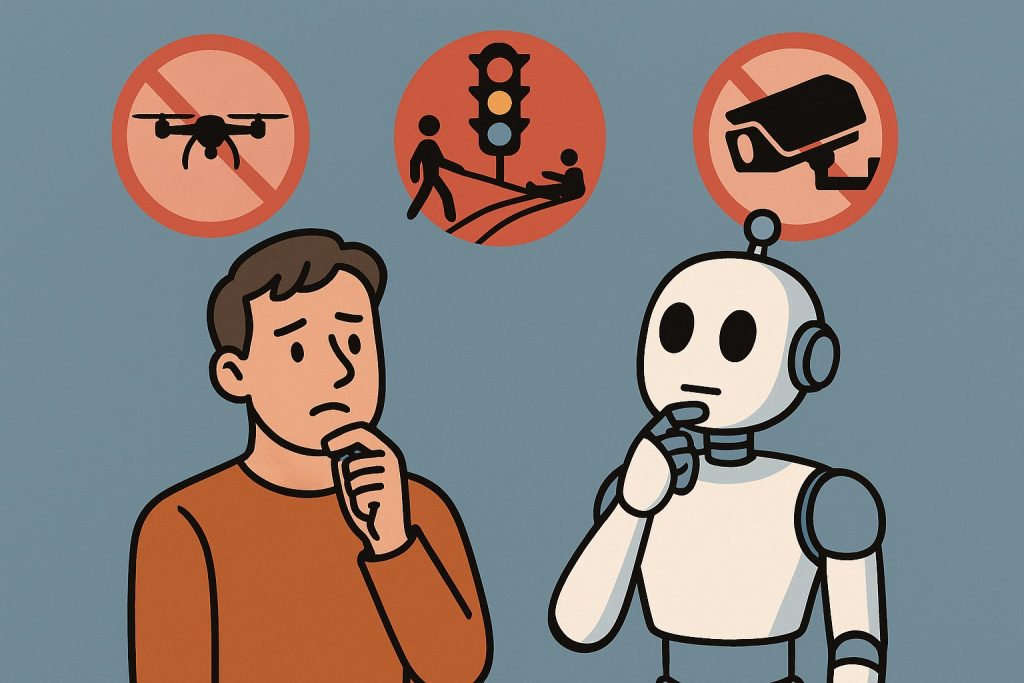As robots become more integrated into our daily lives—whether in hospitals, homes, factories, or battlefields—society faces a growing number of ethical dilemmas. From the responsibilities of autonomous vehicles to the treatment of human-like machines, robotics is no longer just a technological question but a moral one. Can we teach robots to make the “right” decision? And even if we can—should we?
What Makes Robotics an Ethical Issue?
Unlike other technologies, robots interact directly with the physical world, often making decisions or influencing human behavior. This raises concerns not only about safety and control but also about rights, responsibilities, and consequences.
Major Ethical Dilemmas in Robotics
1. Autonomous Weapons and Killer Robots
- There should be no wars on our planet.
2. Self-Driving Cars and the “Trolley Problem”
- If a collision is unavoidable, how should a car decide between harming its passengers or pedestrians?
- Who is legally responsible in the case of an accident: the programmer, the company, or the AI?
3. Privacy and Surveillance
- Delivery drones, home assistants, and security robots may collect vast amounts of personal data.
- Who owns this data, and how should it be stored or protected?
- Are we being watched without consent?
4. Robots Replacing Human Jobs
- Will widespread automation lead to mass unemployment or shift human labor into more creative roles?
- Do businesses have a moral duty to retrain displaced workers?
5. Robot Rights and Human-Like Machines
- As robots become more lifelike (in behavior, speech, or emotion), should they be granted certain rights?
- Could people form emotional bonds with robots and treat them as equals?
- What are the ethical boundaries in using robots for companionship, caregiving, or even intimacy?
6. Bias in AI and Robot Decision-Making
- If the data used to train AI contains racial, gender, or cultural biases, robots may replicate or even amplify discrimination.
- Ethical design must include fairness, transparency, and accountability.
The Need for Ethical Guidelines
Many organizations and governments are now working to create ethical frameworks for robotics and AI. Key principles often include:
- Transparency – Understanding how robots make decisions
- Accountability – Assigning responsibility when something goes wrong
- Privacy protection – Limiting data collection and misuse
- Human oversight – Keeping humans in the decision-making loop
Glossary
- Trolley Problem – _A philosophical thought experiment about making difficult ethical choices involving life and death.*
- Autonomous – _Able to make decisions and act without direct human control.*
- AI bias – _Systematic errors in AI systems caused by flawed or unbalanced training data.*
- Human-in-the-loop – _A principle where humans maintain control or approval over critical decisions made by machines.*
Conclusion
Robots and AI are not just tools—they’re becoming agents in a world shared with humans. As their abilities grow, so does the need for ethical thinking. The challenge isn’t just building smart machines, but ensuring they are used in just, fair, and humane ways. The future of robotics depends as much on ethics as it does on engineering.


